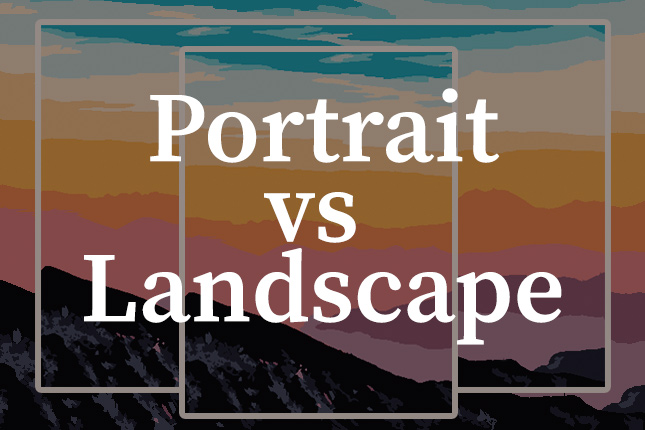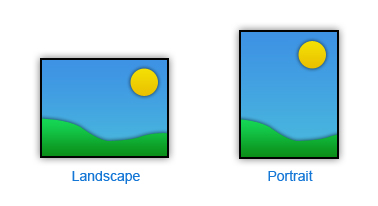
PORTRAIT VS LANDSCAPE BUSINESS CARD MANUAL
Using a DSLR or mirrorless camera in manual mode, you’ll need to know the focus range of your lens. The portrait mode on your smartphone camera will automatically shorten the depth of field, keeping your subject in focus while blurring the background. For example, whether shooting portraits or a horizontal image, you might want to blur the background to draw attention to your subject. Preprogrammed camera settings can help beginners learn what to look for in the camera’s manual settings. “I find that if you have no idea how you’re going to crop an image, the image should look okay if you put the main subject either on a place where the lines intersect or in one of these corners,” Photoshop expert Jesús Ramirez says. These locations often produce the strongest emotional impact. Snap a few shots with the main subject located in the cross points where the grid lines intersect. Position the main subject, for example, in the bottom third of the frame and again in the centre left cell. In many cameras, you can turn on a rule of thirds grid to make these imaginary cells visible.Īs you assess the main subject of your image, think about which section will best convey your message. Imagine each photo is a grid of nine equal cells. “I’ll look for ways that I can break it up into the rule of thirds.” “I try as much as I can to get the golden ratio incorporated in my image somehow,” says Rashid.

Other considerations include your shooting style, the composition, the perspective of the scene, the distance from the subject in the scene, the scene overall (foreground and background) and the emphasis you want to place on the subject. But when I’m out in the desert, it’s wide-open flat spaces and I want to show the size and distance, so I’ll shoot landscapes.” A horizontal orientation emphasises the expanse or tranquillity of farmlands, prairies, woodlands and other outdoor spaces. “The vertical orientation exaggerates the height.

Everything is really big and tall and I want to be able to show that,” photographer Aaron Rashid says. “When I’m in the city, a lot of the stuff I do is portrait style. Once you know the intended use for your image, choose the main subject - a person or object you want to draw attention to - and decide what you want to emphasise and what to exclude to capture the emotion you want to evoke. In all circumstances, the setting and your photographer’s eye will influence the decision. When landscape orientation might be a good fit: When portrait orientation might be a good fit: However, for the mobile version of that same website, portrait images would be a better fit. If it’s a website banner for a desktop browser, landscape orientation is an obvious choice. Different applications often call for either a portrait orientation or landscape orientation.įor example, if you’re posting to Instagram or many other scrolling-based online image viewing sites and platforms, shoot in portrait format. You’ll want to know where an image will appear prior to photographing that busy toddler, creampuff vintage car or towering skyscraper. The primary considerations are your style, how you will use the image and what you want to convey to the viewer. However, scenery and people can be captured with either portrait format or landscape format. Typically, subjects with strong vertical orientations - like people, tall buildings and waterfalls - work best in a portrait orientation, while scenery like a mountain range displays best in a horizontal orientation. By default, smartphones display in portrait orientation.

Photos are taller than they are wide in portrait orientation. Portrait photography often uses a vertical orientation to capture an entire person or subject or to place emphasis on a subject, as in a close-up head-and-shoulders headshot.
PORTRAIT VS LANDSCAPE BUSINESS CARD TV
Your TV screen is an example of landscape mode. This view is landscape orientation or horizontal orientation.

The photo is wider than it is tall, to capture the vastness of a natural setting. Landscape images align with the horizon line. The difference between landscape and portrait orientation. Discover how, given the options of landscape orientation or vertical format, you can select the right approach for the best shot. Most cameras - whether they’re smartphones or DSLR cameras - only capture rectangular pictures, so you only have two options. But while a horizontal image for landscape photography or a vertical subject in an upright portrait shot might seem natural, image orientation isn’t always intuitive. The orientation of any image can transform the emotions of a photo, from playful or intimate to dramatic or detached.


 0 kommentar(er)
0 kommentar(er)
